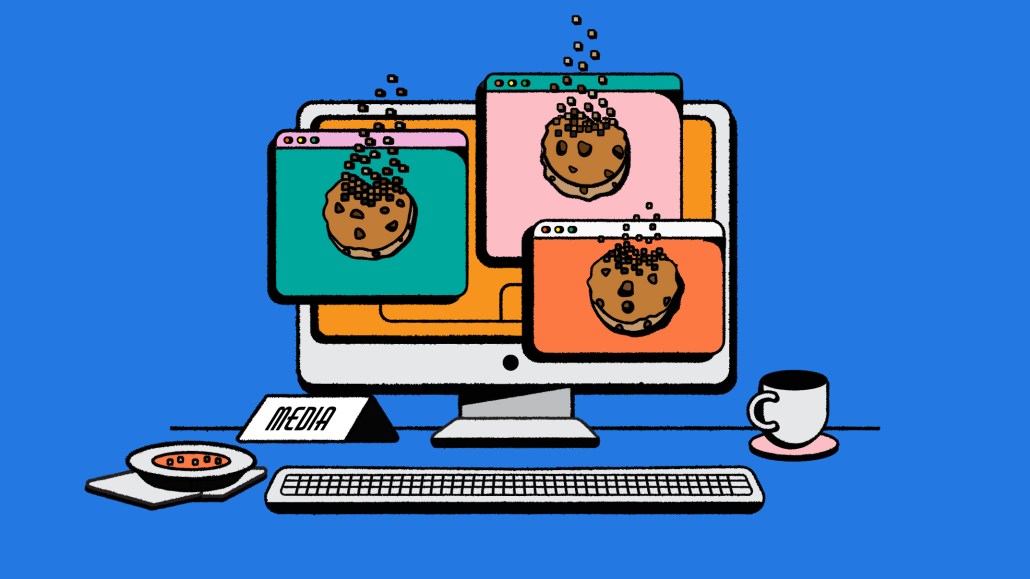
This article is a WTF explainer, in which we break down media and marketing’s most confusing terms. More from the series →
The scope of the privacy changes coming to the digital landscape is so vast, with dominant corporations skirmishing not just with each other but with foreign governments, it may seem like local news publishers have no way to be proactive.
But a few of them are hoping to find strength in numbers, using a product developed by the Local Media Consortium, a strategic partnership organization whose membership includes local newspaper publishers such as Gannett and the Seattle Times and broadcasters such as Tegna. NewsPassID, a sign-on technology and the precursor, LMC hopes, to an ad network that can leverage the collective audience scale of thousands of local news sites.
So WTF is NewsPassID?
NewsPass ID is a single sign-on technology created for local news publishers who are trying, like everybody else in media, to gather more first-party data from their users. For publishers that deploy NewsPassID, the data gathered can be used not just for digital advertising but also to drive a subscription strategy: A registered user is easier to bring down a subscription funnel.
So this is a sign-on technology?
Yes.
But it’s also an ad network?
Eventually it will become one, yes; NewsPassID launched in a pilot stage just this quarter, with four publishers testing integrations in a few SSPs. Right now, the LMC has to ensure that its different sites can support single identities, and that there’s no data leakage in open auction environments.
If all goes according to plan, NewsPassID will begin testing integrations with buy-side technologies some time in the third quarter of 2021.
In theory, the success of the sign-on technology will drive success for the network: More scale in the number of known users identified using NewsPassID means more impressions that can be bundled up and offered to advertisers. More scale should attract more advertisers, and the resulting boost in demand should mean more revenue for publishers, which should, in turn, attract still more publishers, and so on.
What about the publishers that already have sign-on tools in place?
LMCs hope is that those publishers can use NewsPassID to manage consent around advertising. If an audience member gives consent for personalized ads, then they can be added, in privacy-compliant ways, to segments made up of audience members across LMC’s membership.
Who’s going to set the price of this inventory?
Each participating publisher will set the rates for their own inventory.
How does this solve advertisers’ hesitations about news as a content category?
It addresses some, but not all of them. The LMC commissioned research on advertisers’ perceptions of local news, and found many ad buyers see the appeal of buying local news inventory, but are hesitant to transact because local news cannot offer scale and its inventory is often sold — according to buyers — by people with insufficient digital knowledge or expertise. Aside from the occasional tie-up like a recent one between McClatchy and Gannett, partnerships between large numbers of local news publishers are few and far between.
If it gains sufficient audience traction across its member publishers, NewsPassID should solve the scale and expertise problems. The LMC’s combined audience across its membership — 192 million monthly unique users, according to Comscore — is bigger than NBCUniversal’s, ViacomCBS’s or Hearst’s.
Why will this succeed where previous publisher advertising alliances have failed?
It’s early to say, but LMC’s play here differs from previous attempts at alliances, including the Pangaea Alliance or Arena.
In some ways, the individual LMC members’ lack of strength is, collectively, a strength. Without the muscle or expertise to compete for national advertisers’ programmatic budgets, there is less likelihood that its members will peel off or hold back large portions of their inventory in hopes of selling it directly themselves.
And thanks to the coming changes, which are likely to scramble how ad buyers allocate their budgets, the network bound together by NewsPassID should at least get a fresh look from marketers.
Provided it scales, of course.
More in Media

Podcast companies turn to live events to capture growing advertiser spend
The surge in the number of live podcast events in 2025 reflects a broader shift: advertisers are betting bigger on podcasts — not just as an audio channel but as a full-fledged creator economy play.

Media Briefing: ‘Cloudflare is locking the door’: Publishers celebrate victory against AI bot crawlers
After years of miserably watching their content get ransacked for free by millions of unidentified AI bot crawlers, publishers were finally thrown a viable lifeline.

How Vogue could navigate potential industry headwinds as Anna Wintour — who agency execs say made ad dollars flow — brings on new edit lead
Anna Wintour’s successor at Vogue will have to overcome the myriad of challenges facing fashion media and the digital publishing ecosystem.








